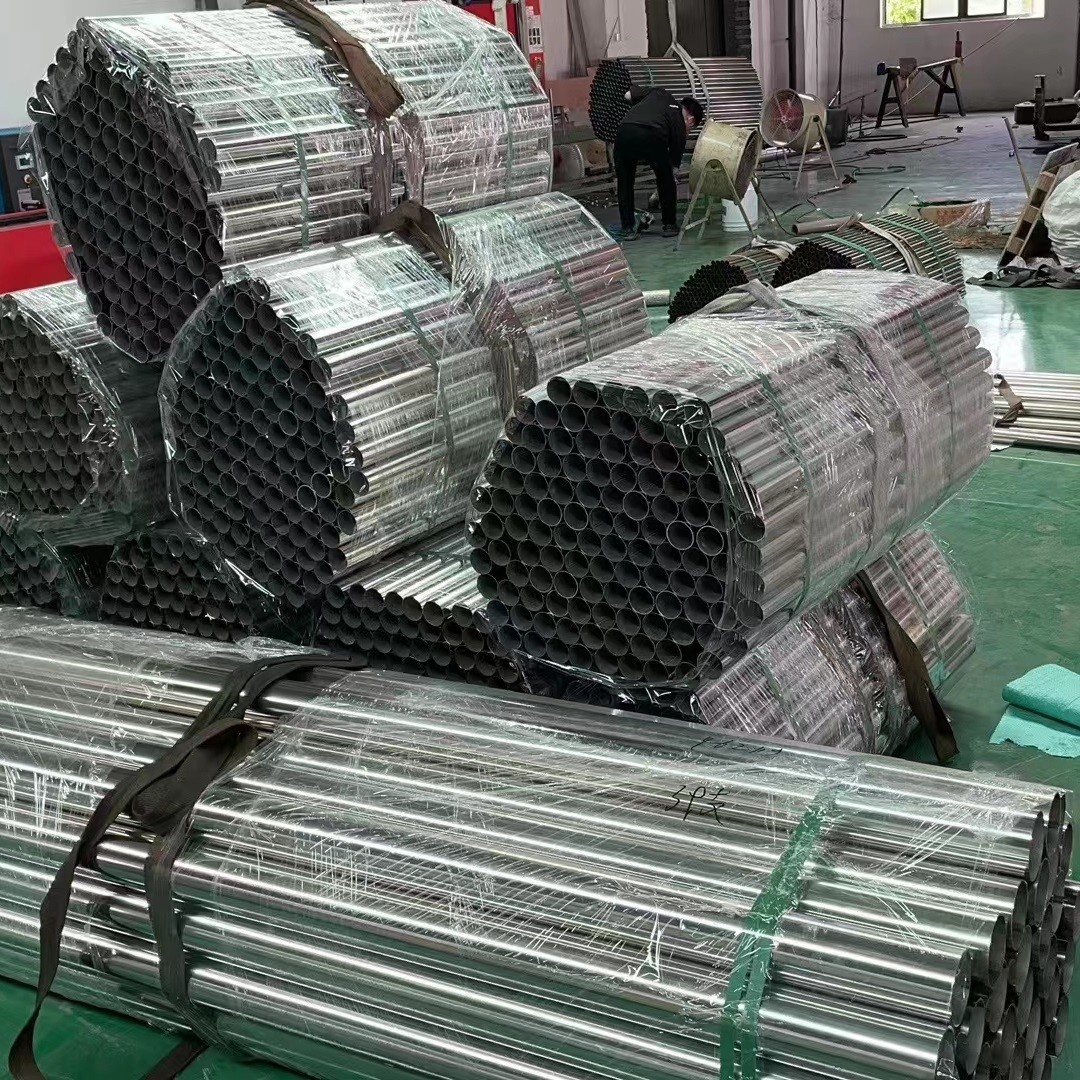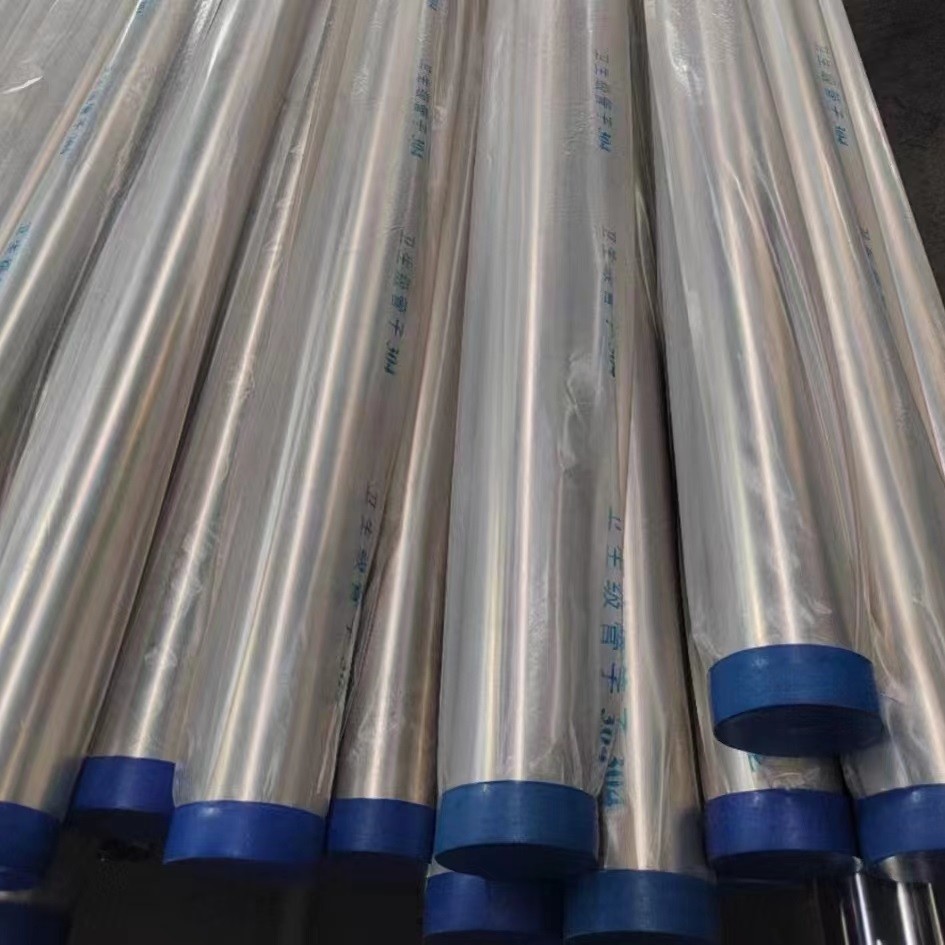Food-Grade Stainless Steel Sanitary Tubing Grade 304 316L / 1.4301
1.4404 in 6m Length
Specification of our stainless steel pipe
| Products Name | Stainless Steel pIpe |
| Diameter | DN6 - DN500 |
| Wall Thickness | SCH10S - XXS or unstandard size as request |
| Length | 6m or cutting any length as request |
| Standard | ASTM JIS EN DIN |
| Technique | Hot Rolled / cold drawn |
| Type | Seamless Pipe / Welded Pipe |
| Surface | Bright Polished, Pickling |
| Main Grade | 201 304 304L 309S 310S 316L 316Ti 316LMod 317L 321 347 410 904L
254SMO 253MA 2205 2507 654SMO 926 400 c276 c22 C4 600 625 800
825.etc |
| MOQ | 500 kgs |
| Loading Port | Shanghai Port |
| Packing | wooden box or ppbag |
For food-grade 304 stainless steel pipes and industrial stainless
steel pipes, although they are all stainless steel pipes, there are
certain differences between them. Needless to say, there is a gap
in the application field, and the use determines the implementation
standards, process requirements, and surface of the two. Next,
Permanent Stainless Steel Manufacturing Co.,Ltd will introduce the
difference between food grade 304 stainless steel pipe and
industrial pipe.
1. Heavy metal content
The main difference between food grade 304 stainless steel pipe and
industrial pipe is that the heavy metal content of food grade 304
stainless steel pipe is much lower than that of industrial pipe.
According to the standard GB 31604.34-2016 "National Food Safety
Standard Food Contact Material and Product Lead Determination and
Migration Determination", food grade 304 stainless steel pipe is
required to dissolve lead content ≤0.05 under acetic acid soaking;
while industrial pipes, such as Markov There is no clear regulation
on the lead content of stainless steel.
2. Surface
The most obvious difference lies in the surface. The surface of
food-grade 304 stainless steel pipes must be at least BA grade,
which is a bright surface; while industrial pipes have no
requirements for the surface, the surface is often rough, and the
key is to have high corrosion resistance.
3. Process requirements
For food-grade 304 stainless steel pipes that are in direct contact
with food, the finish inside the pipe is very important. However,
the inner wall of the tube needs to be polished and brightly
annealed to make the inside of the tube wall smoother. If there is
a liquid medium inside, it can prevent clogging.
However, industrial pipes are often used in polluted environments,
so they have higher requirements for the anti-oxidation performance
of the pipes, so pickling passivation treatment is generally
carried out. Pickling passivation can generate a dense oxide film
on the surface of the pipe, which greatly improves the corrosion
resistance of the pipe.
4. Implementation standards
For the reference standard of food grade 304 stainless steel pipe,
please refer to QB/T 2467-2017 "Stainless Steel Pipe Standard for
Food Industry";
The standards of industrial stainless steel pipes are divided into
several varieties due to their different uses, such as GB/T
31929-2015 "Stainless steel welded steel pipes for ships", GB/T
32569-2016 "Stainless steel welded steel pipes for seawater
desalination devices", GB/T 24593 -2018 "Austenitic Stainless Steel
Welded Steel Pipe Standard for Boiler and Heat Exchanger", GB
30813-2014 "Austenitic Stainless Steel Welded Steel Pipe for
Nuclear Power Station", etc.
The above standards mainly stipulate the surface roughness and
hygiene requirements of food 304 stainless steel pipes, while the
industrial pipes mainly stipulate the content of chemical elements,
mechanical properties, dimensions, and shapes.
5. Scope of application
Food-grade stainless steel pipes are generally used in production
equipment and assembly lines that are mainly used in food,
beverages, wine, medicines, etc.; while industrial pipes are often
used in boilers, heat exchangers, mechanical parts, sewage pipes,
and pressure pipes for chemical industries.
The above is the difference between food-grade 304 stainless steel
pipe and industrial pipe. We understand that the differences
between the two are heavy metal content, surface, process
requirements, implementation standards, and application scope. Of
course, in addition to these differences, there are prices,
production methods, and so on.


















